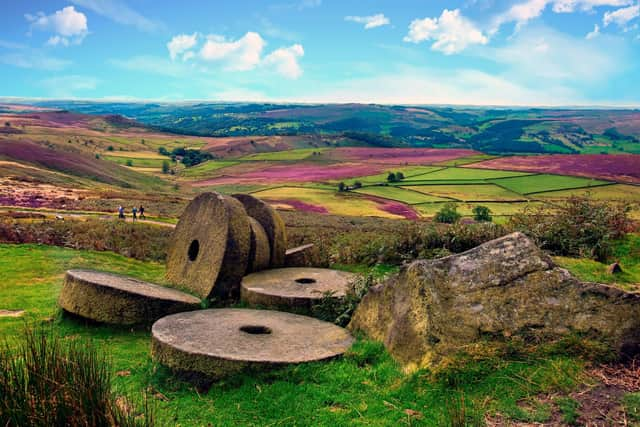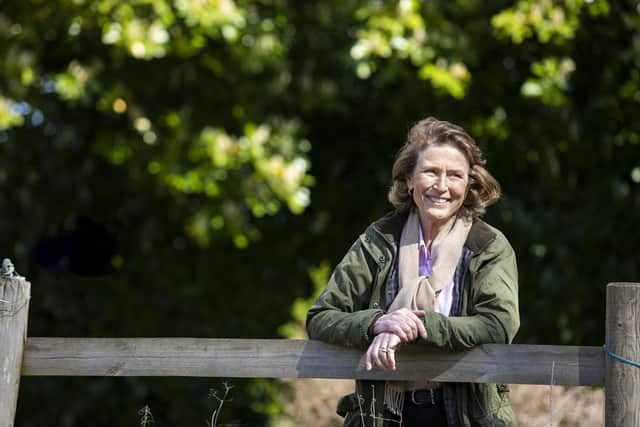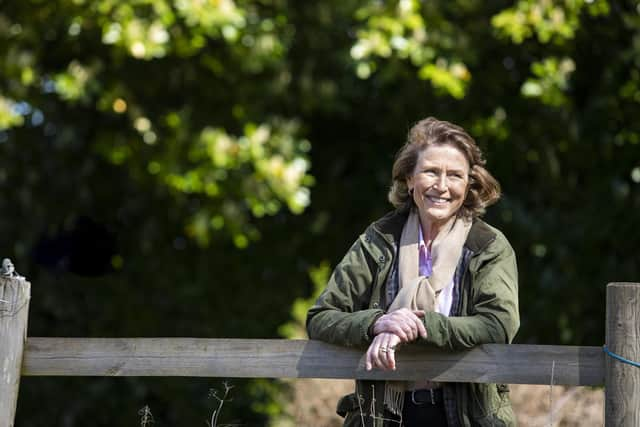Farmers helping to preserve the habitats and heritage of some of the wildest areas of the Peak District
The Peakland Environmental Farmers (PEF) group currently represents 77 land managers who look after 40,000 hectares in the Dark and Southwest Peaks and the establishment of the group has been helped by a £100,000 grant from The National Lottery Heritage Fund.
The core aims of the cooperative are nature recovery, peatland restoration, clean water and net zero by 2040, while in the long term it is looking to replace the loss of farm subsidies by securing a blend of public and private finance to restore the precious habitats and heritage of the Peak District National Park.
Advertisement
Hide AdAdvertisement
Hide AdThe Heritage Fund grant will enable the PEF, which has so far been established on a largely voluntary basis, to attain legal standing, carry out ecological surveys of its members’ land holdings and develop landscape-scale conservation plans.


This will provide a platform from which the environmental cooperative aims to secure public funding through Environmental Land Management Schemes and private finance via natural capital markets to support long- term, large-scale projects such as rebuilding stone walls, restoring damaged peatland and planting new networks of hedgerows.
The wildlife research charity the Game & Wildlife Conservation Trust (GWCT)
is managing the National Lottery funded project.
Chief executive Teresa Dent CBE said: “I am delighted that the Heritage Fund is supporting GWCT to help farmers and moorland managers in the Peak District create an Environmental Farmers Group that will aim to deliver substantial environmental outcomes over 40,000 hectares of land.
Advertisement
Hide AdAdvertisement
Hide Ad

"This is just the beginning of what I am sure will be an exciting environmental journey. It is wonderful that National Lottery players have made that start-up possible.”
Farmers manage 72 per cent of the countryside and already in a smaller cluster, the Hope Valley and Bradfield Farmers, they have distributed 31,000 hedge plants as part of a project to plant 24km of hedgerows in four years.
This and similar projects will contribute to the longer term work of the Peak District National Park.
Phil Mulligan, chief executive, said: “The farmed landscape has been at the heart of the National Park for generations and remains inextricably linked to what we can deliver for nature recovery and climate change today.
Advertisement
Hide AdAdvertisement
Hide Ad

"We are already at the forefront of key government tests on the transition to new environmental land management (ELM) approaches, along with administering significant grants through the Farming in Protected Landscapes (FiPL) programme. This substantial Lottery funding to PEF will enable the farming community both as individuals and collaboratively to further strengthen the Peak District’s leading role in demonstrating how the agricultural landscape can tackle the biggest environmental issues we currently face.”
The Dearne Valley farmers group in South Yorkshire teamed up with the Don Catchment Rivers Trust to plant more than three and a half miles of hedgerows over winter after the Woodland Trust supplied 39,000 hedge plants.
It is estimated that since the 1950s up to 50 per cent of hedgerows have been lost through removal or neglect and this planting scheme of Hawthorn, Crab apple, Dog rose, Dogwood, Field maple, Hazel,
Holly, Rowan and Bird Cherry will have multiple benefits.
It will extent the flowering season for bees and insects, provide food for bats and shelter for other creatures including livestock.
Advertisement
Hide AdAdvertisement
Hide AdHedgerows are also considered a natural flood management measure, as they improve soil infiltration and slow the rate at which overflow enters the drainage network and watercourses.
There are water quality benefits as hedges are a barrier to pollutants such as pesticides, fertilisers and sediment.
Dearne Valley farmers, Chad and Lucy Stevens, said: “Many hedges were ripped out here through the 1960s and 70s, and we are putting them back in. Our reasons are twofold. We are moving to a regenerative agriculture approach, bringing livestock to the farm and hope the hedges will provide natural barriers to allow us to move more livestock with ease between fields. We are keen to improve biodiversity on the farm and provide natural corridors to support movement and better growth.”
Comment Guidelines
National World encourages reader discussion on our stories. User feedback, insights and back-and-forth exchanges add a rich layer of context to reporting. Please review our Community Guidelines before commenting.
